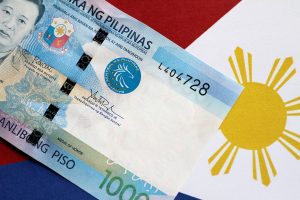
Record debt highlights need for efficient collection
THE GOVERNMENT must enhance revenue generation and ensure efficient spending to sustainably manage its debt over the medium term, GlobalSource Partners said.
“This is one big challenge to the Philippine government: to sustain its medium-term fiscal consolidation plan in order to minimize the need for borrowing and servicing both principal and interest,” GlobalSource country analysts Diwa C. Guinigundo and Wilhelmina Manalac said in a brief.
The National Government (NG) borrows from domestic and foreign resources to fund operations which cannot be supported from its revenue.
At the end of May, NG outstanding debt rose to a record P15.35 trillion from P15.02 trillion at the end of April, with 68% of the debt generated from domestic sources and 31.96% from foreign sources.
“Fiscal and debt sustainability can only be achieved if public revenue is maximized through appropriate taxation,” the analysts said.
“If this is not accomplished, the encouraging trend in public debt may be unsustainable over the medium term.”
Rizal Commercial Banking Corp. Michael L. Ricafort said encouraging tax compliance and expanding economic growth will help the country manage its debt.
“Priority would be the intensified tax collections from existing tax laws and encouraging compliance with the payment of the correct taxes and to run after tax cheats. The last option would be new and higher taxes, especially if inflation stabilizes in the coming months/years,” he said via chat.
Debt may also be curbed through government rightsizing and anti-corruption measures, he added.
In its latest meeting, the Development Budget Coordination Committee (DBCC) maintained its deficit projection for this year at P1.48 trillion, equivalent to 5.6% of gross domestic product (GDP).
For 2025, the DBCC raised the deficit ceiling to P1.537 trillion from P1.490 trillion, pushing the deficit-to-GDP projection to 5.3%, and to 3.7% by 2028.
Faster GDP growth would also help bring the national debt-to-GDP ratio to below 60%, the threshold deemed sustainable for developing countries by multilateral banks, Mr. Ricafort said.
The debt-to-GDP ratio currently stands at 60.2%.
Before the pandemic, the NG’s outstanding debt averaged P6.9 trillion, growing at an average of 8.3% yearly between 2016 and 2019. — Beatriz Marie D. Cruz



